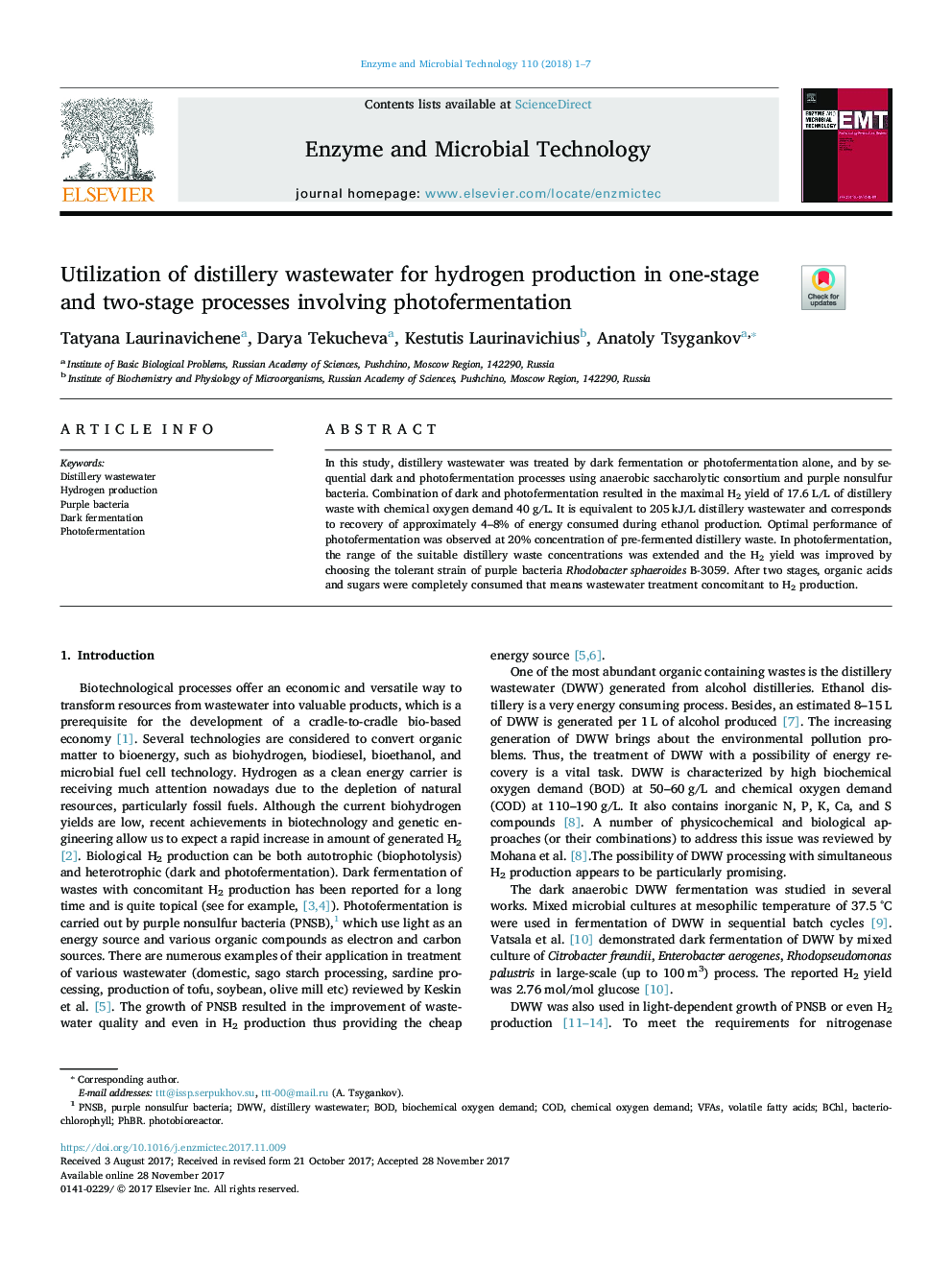| Article ID | Journal | Published Year | Pages | File Type |
|---|---|---|---|---|
| 6488177 | Enzyme and Microbial Technology | 2018 | 7 Pages |
Abstract
In this study, distillery wastewater was treated by dark fermentation or photofermentation alone, and by sequential dark and photofermentation processes using anaerobic saccharolytic consortium and purple nonsulfur bacteria. Combination of dark and photofermentation resulted in the maximal H2 yield of 17.6Â L/L of distillery waste with chemical oxygen demand 40Â g/L. It is equivalent to 205Â kJ/L distillery wastewater and corresponds to recovery of approximately 4-8% of energy consumed during ethanol production. Optimal performance of photofermentation was observed at 20% concentration of pre-fermented distillery waste. In photofermentation, the range of the suitable distillery waste concentrations was extended and the H2 yield was improved by choosing the tolerant strain of purple bacteria Rhodobacter sphaeroides B-3059. After two stages, organic acids and sugars were completely consumed that means wastewater treatment concomitant to H2 production.
Related Topics
Physical Sciences and Engineering
Chemical Engineering
Bioengineering
Authors
Tatyana Laurinavichene, Darya Tekucheva, Kestutis Laurinavichius, Anatoly Tsygankov,
